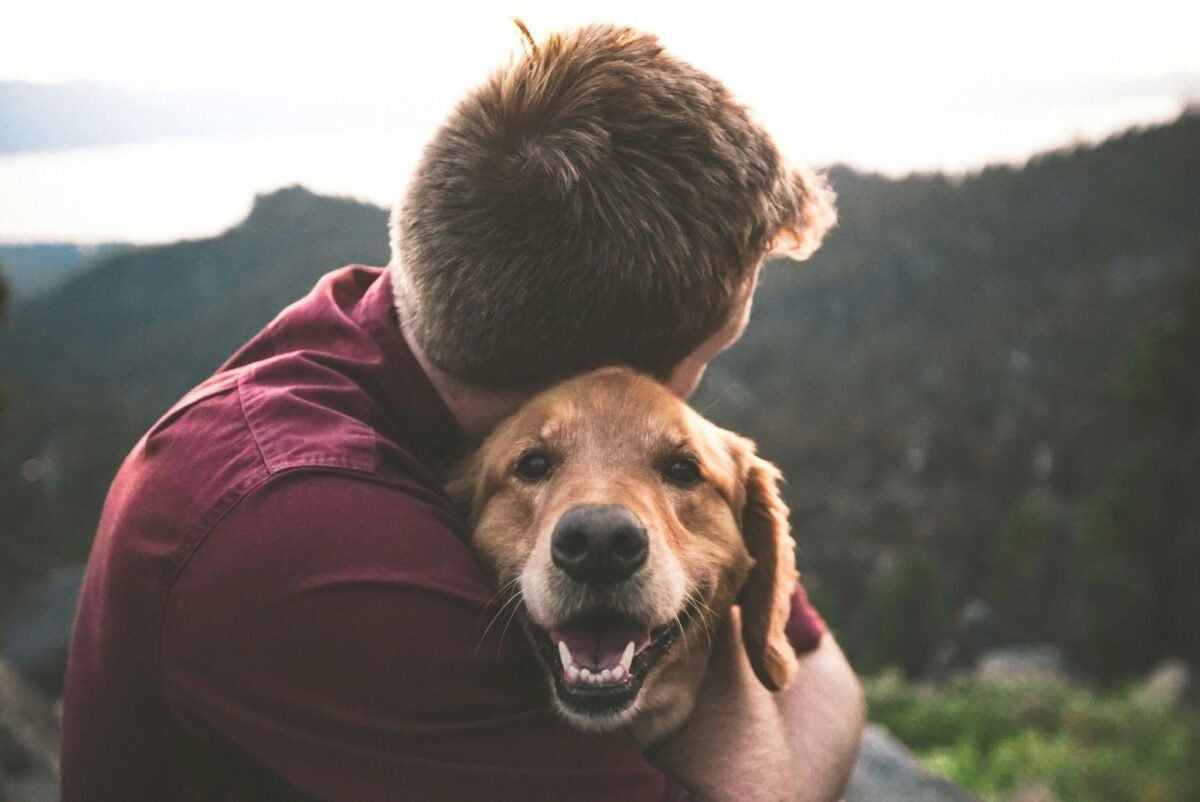Dog Care Advice
Boston Terrier Chihuahua Mix Dog Temperament, Health and cost

Last Updated on January 9, 2021 by Dogs Vets
All you need to know about the Boston Terrier Chihuahua Mix
The Boston Terrier Chihuahua Mix is known for its small size and sassy nature, but how do you know if this cross would be the perfect pet for you?
If you have any questions about the Boston Terrier Chihuahua Mix, we’d love to help!
Read on to learn more about this spunky little hybrid and find out if he’ll fit into your unique lifestyle!
What is the Boston Terrier Chihuahua Mix?
The Boston Terrier Chihuahua Mix, also known as the Bochi, Chibo or Bohuahua, is the offspring of the Boston Terrier and the Chihuahua.

Boston terrier chihuahua mix puppy
Whenever you have a dog that is the “designed” offspring of two purebred parents, you have what most people call a crossbreed, and crossbreeding is associated with some controversy.
Read to learn more about Crossbreeding…
Crossbreeding and the designer dog debate.
Ever heard of a hybrid or designer dog? If so, you’ve heard of crossbreeding.
Many breeders have jumped on the crossbreeding craze, selling crossbred puppies for as much as purebred dogs. Is that fair?
Crossbreed advocates insist that there is a big difference between mutts and crossbreeds.
You see, while mutts are mixed breeds with a largely unknown lineage, crosses are the designed offspring of two specially selected purebred parents. Hence the term “designer dog.”
The problem of health in relation to crossbreed dogs and purebred dogs.
The rise of genetic diseases and health complications in purebred dogs is an unfortunate consequence of generations of overbreeding to maintain breed standards.
Those who support crossbreeding hope that the practice will help reduce these genetic health problems by expanding the gene pool and reducing the likelihood that genetic problems will be passed on to litters.
However, this is not guaranteed, and many naysayers claim that crossbreed dogs are just as prone to genetic health problems as their purebred counterparts.
The Origin and history of the Boston Terrier Chihuahua mix.
The Boston Terrier Chihuahua Mix is a crossbreed of the newer generation. This means that his history is still a work in progress and his history and origins are still a bit murky.
To learn more about him, we need to look at the history of his purebred parents.
Let’s start with the Boston Terrier!
Boston Terrier Chihuahua Mix Overview
| Dog Average height | 9 – 17 inches |
| Average weight | 10 – 15 pounds |
| Coat type | Dense, short and silky |
| Hypoallergenic? | The Chihuahua is so she could be |
| Grooming Needs | Low maintenance |
| Shedding | Low and then usually just in the summer |
| Brushing | Once a week is enough, maybe twice in the summer |
| Touchiness | Can be somewhat sensitive |
| Tolerant to Solitude? | The Terrier dog is fine at being alone but the Chihuahua dog is not at all so your Bo-Chi could be either in the middle |
| Barking | Low |
| Tolerance to Heat | Good but not the extreme |
| Tolerance to Cold | Good but not the extreme |
| Good Family Pet? | Good to very good |
| Good with Children? | Moderate to good |
| Good with other Dogs? | Moderate |
| Good with other Pets? | Moderate |
| A roamer or Wanderer? | Moderate |
| A Good Apartment Dweller? | Yes but she will need activity |
| Good Pet for new Owner? | No |
| Trainability | Moderate – if she has a temperament more like the Chihuahua she will be obstinate about it |
| Exercise Needs | Moderate |
| Tendency to get Fat | Moderate |
| Major Health Concerns | Deafness, patellar luxation, heart problems |
| Other Health Concerns | Eye problems, allergies |
| Life Span | 15 years |
| Average new Puppy Price | $500 – $800 |
| Average Annual Medical Expense | $450 – $600 |
| Average Annual Non-Medical Expense | $275 – $400 |
Origin and History of the Boston Terrier Dog
The Boston Terrier originated during the height of blood sports in England in the 19th century.
Athletes and breeders wanted a dog that was tough enough to fight in boxing matches and scruffy enough to excel in rat races.
This led breeders to cross terriers with bull breeds.

Boston Terrier Dog Breed
One such cross, a mix of Bulldog and White English Terrier named Judge, was sold to an American breed enthusiast named William O’Brien in the 1860s.
In fact, the Boston Terrier has been the official mascot of Boston University for 100 years.
The Boston Terrier was officially registered by the American Kennel Club (AKC) in 1893 and is ranked 21st out of 190 on the AKC’s list of America’s Most Popular Dog Breeds.
Now let’s talk about the Chihuahua!
Origin and history of the Chihuahua dog breed
Although the Chihuahua is the national dog of Mexico, its original relationship with the country is still a mystery.
However, historians are certain that the Chihuahua is an ancient breed whose likeness is depicted in ancient relics around the world.

Long hair chihuahua
Considered the successor to the early Techichi, the Chihuahua likely evolved through careful refinement by the Aztecs, who modified the breed to create much smaller, more compact dogs.
Although originally thought to have died out during the Cortez conquest, the Chihuahua was found to have survived in remote villages when discovered by American travelers in the 19th century.
Since most of these tiny Aztec creations were found in the Chihuahua region, the breed became officially known as the Chihuahua dog.
When Chihuahua became a Famous dog breed
It wasn’t long after the discovery of the Chihuahua that his fame began to skyrocket.
This little dog with a big ego, known for its compact size and sassy attitude, made a name for itself not only in Hollywood, but also among families looking for an intelligent and lively little companion.
The American Kennel Club officially recognized the Chihuahua in 1908, and today it ranks 32nd out of 190 on the AKC’s list of America’s Most Popular Dog Breeds.
With backgrounds as rich and exciting as the Boston Terrier and the Chihuahua, their offspring must certainly be the crossbreed, right?
Read to learn more about the Boston Terrier Chihuahua mix.
Boston Terrier Chihuahua Mix Temperament
Due to the fact that it is a hybrid, the temperament of Boston Terrier and Chihuahua Mix will depend on the behavioral traits it inherits from its parent breeds.
Both the Boston Terrier and Chihuahua are known for their personalities, but they have different temperament traits that could be passed on to their mixed offspring.
For example, if your Boston Terrier Chihuahua mix prefers its Boston Terrier parents, you can expect it to be fairly fluent.
There’s a reason the Boston Terrier is known as the “American gentleman”!
The Boston Terrier is a very intelligent breed and is said to be excellent with children and other pets, although it has been known to become a bit hyperactive if not properly trained and socialized.
The Boston Terrier is a sensitive breed that likes to be content and enjoys being with his family.
But what about the Chihuahua’s temperament ?
The Chihuahua is the epitome of a big dog in a small body. With its sassy temperament, it’s no secret that the Chihuahua has a bit of an ego and likes to think of itself as king of the hill.
While this is not the best dog for homes with smaller children, the Chihuahua is a wonderful pet for families with older children, singles or couples.
It can be a stubborn dog and does not get along well with other pets.
Witty and highly intelligent, the Chihuahua is eager to please but can be stubborn. He will need training early in life to make sure he becomes a well-mannered little adult.
Remember that your Boston Terrier Chihuahua mix may inherit one of the above personality traits from its purebred parents.
For this reason, early socialization and obedience training from puppy age are key to ensuring that your Boston Terrier Chihuahua mix will be happy, healthy and well rounded.
So, if the Boston Terrier Chihuahua Mix’s personality traits are left to chance, does that mean it will look that way?
Let’s find out!
Boston terrier Chihuahua mix appearance and characteristics
Yes, the Boston Terrier Chihuahua Mix is a designer dog and that means that its appearance, as well as its temperament, will depend on genetics and chance.
But what are your options?
First of all, let’s consider the characteristic features of the Boston Terrier.
The purebred Boston Terrier is a small dog that stands 15 to 17 inches tall and can weigh about 12 to 25 pounds.
Its short, smooth coat is often called a “tuxedo coat” because of its unique tuxedo-like markings. This coat is available in three color combinations including:
- White and Black
- Dark brown and white
- White and brindle
The Boston Terrier has large, erect ears, a docked tail, and a short, squashed face with large eyes.
The Chihuahua, on the other hand, looks quite different. Did you know that there are two unofficial species of Chihuahua?
Although not recognized by the American Kennel Club, the two versions of the Chihuahua are usually accepted by most Chihuahua enthusiasts and breeders and used to describe the difference in appearance between the two varieties.
That’s right, we are talking about the Apple Head Chihuahua and the Deer Head Chihuahua.
Differences between the Apple Head Chihuahua and the Deer Head Chihuahua.
There are a number of differences between the two types of Chihuahua, but there are some differences that make it easy for even beginners to tell at a glance.
For example, the Apple Head Chihuahua has a round, apple-shaped head, a shorter muzzle and bulging eyes, while the Deer Head Chihuahua has a longer muzzle and fairly large ears that make it resemble a deer.
In addition, the Apple Head Chihuahua is the only variety accepted for shows by most large clubs.
Chihuahua are much smaller than the Boston Terrier and usually weigh no more than six pounds. They are only about 5 to 8 inches tall.
They can also come in a long or smooth coat, with fawn being the most common color among Chihuahua dogs.
However, their coats can come in a total of six colors, including:
- Black
- White
- Fawn
- Chocolate
- Cream
- Gold.
Since your Boston Terrier Chihuahua mix is a cross between the Boston Terrier and the Chihuahua, its appearance is left to genetics and chance.
How do you care for this cross? We will see.
Boston Terrier Chihuahua Mix Grooming
In the case of the Boston Terrier Chihuahua Mix, care should be fairly simple.
Both the Boston Terrier and Chihuahua are moderate shedders that require weekly brushing and occasional bathing to keep their coats healthy.
However, if your Boston Terrier Chihuahua mix has a long-haired Chihuahua parent and he inherits that long-haired coat, experts recommend brushing once or twice a week to keep his long, silky hair free of mats and tangles.
Your Boston Terrier Chihuahua mix’s nails will need to be trimmed regularly to prevent breakage, and his ears will need to be cleaned regularly to keep them from becoming waxy and damp.
Longevity and health concerns of a Boston Terrier Chihuahua Mix.
All dogs are susceptible to hereditary diseases and the Boston Terrier Chihuahua Mix is no exception.
With a lifespan of 11-16 years, your Boston Terrier Chihuahua mix may be susceptible to the same problems as its parent breeds.
For example, the Boston Terrier, which has a lifespan of 11-13 years, is prone to:
- Patellar luxation
- Hemivertebrae
- Sensorineural deafness
- Cataracts
- Corneal ulcers and
- Glaucoma.
The Chihuahua dog breed, on the other hand, has a life span of 14-16 years and may be predisposed to:
- Persistent ductus arteriosus
- Mitral valve disease
- Eye problems
- Patellar luxation
- Tracheal collapse and
- Idiopathic epilepsy.
A potential owner of the Boston Terrier Chihuahua Mix should also note that both the Boston Terrier and the Apple Head Chihuahua are particularly susceptible to a condition called Brachycephalic Airway Syndrome.
Brachycephalic airway syndrome is a disorder carried by most dogs with shorter faces as a result of their cranial development.
This condition is known to cause breathing difficulties that can be aggravated by heat and humidity, discomfort, snoring, sleep apnea, pain and more.
To learn more about brachycephalic airway syndrome and its symptoms, click here.
Because of the number of health issues your Boston Terrier Chihuahua Mix may face in the future, you may want to opt for an early health checkup.
Training and exercising your Boston Terrier Chihuahua Mix.
Both the Boston Terrier and Chihuahua are intelligent breeds, but while the Boston Terrier is known for its willingness to please and its ability to learn, the Chihuahua is a bit more stubborn and may not take to lessons as quickly.
This has nothing to do with intelligence and everything to do with its stubborn disposition.
In addition, the Boston Terrier is a friend to all, while the Chihuahua can be more aloof to strangers.
Early socialization and obedience training beginning in puppyhood would help stop undesirable behaviors, as would consistent and patient training that utilizes the positive reward system.
In terms of exercise, the Boston Terrier Chihuahua Mix is an active little dog that needs a good half hour of exercise every day and enjoys playing with their favorite people and running around in a securely fenced yard.
Is the Boston Terrier Chihuahua Mix the right dog breed for me?
The Boston Terrier Chihuahua Mix is a compact cross that does well in a range of home types from apartments to sprawling mansions.
However, it may not be the best dog to join families with smaller children and other pets.
However, the care and general grooming of the Boston Terrier Chihuahua Mix is fairly simple, and his training needs make him a great choice for owners looking for a lap dog that loves to play.
Also keep in mind that, as mentioned above, the Boston Terrier Chihuahua mix can be prone to a number of health issues.
Do you think the Boston Terrier mix is the perfect dog for you? If so, then read on as we have some tips on how to find the healthiest Boston Terrier Chihuahua mix puppy!
How to find a healthy Boston Terrier Chihuahua Mix puppy.
Research and patience are essential to finding the healthiest Boston Terrier Chihuahua Mix puppies.
Whether you choose to go to a breeder or try a rescue home, it is of the utmost importance to get your Boston Terrier Chihuahua puppies from a responsible source.
Most Boston Terrier Chihuahua mix breeders charge between $500 and $1,000. Prices are higher if the parents of your cross are show quality.
One of the great things about a reputable breeder is that they have already health checked their puppies and can provide you with certificates to prove it.
If you intend to rescue your Boston Terrier Chihuahua mix from a shelter, adoption fees are usually $50 to $100 at most.
Plus, shelters usually cover the first vet trip!
Boston terrier/chihuahua mix price
How much should you pay for a Boston Terrier?
On the average, the price for the Boston Terrier is between 600 and 1,200 USD. According to NextDayPets, the average price for all Boston Terriers sold is $800. This number increases for dogs with superior pedigrees. A top quality dog with exceptional breed lines can cost between $1,500 and $4,500.
The cost of the Boston Terrier Chihuahua mix puppy ranges from $500 to $800 USD
with an expected average annual medical expense between $450 and $600
Did this article really helped you decide if the Boston Terrier Chihuahua Mix is the dog for you? Let us know your thoughts in the comments!
Fact Check
We strive to provide the latest valuable information for pet lovers with accuracy and fairness. If you would like to add to this post or advertise with us, don’t hesitate reach us. If you see something that doesn’t look right, contact us!
Reference: Thehappypuppysite.com
Dog Care Advice
Can You Have Allergies and Still Get a Dog?

Last Updated on June 27, 2024 by Dogs Vets
Dogs are great company for humans, offering companionship a range of life-enriching benefits including reduced stress, improved sleep and increased opportunities to spend more time outside.
However, in some cases their impact on health might be less than ideal. While dogs can be lots of fun, being allergic to them certainly isn’t, but is it possible to have allergies and still own a dog?
Designer Doodles
Recent years have seen an increase in demand for a mix of one pedigree breed with a poodle to create a “doodle”. One example is labradoodles or the St Bernard/poodles at Bernedoodle puppies PA; breeds often thought to be hypoallergenic due to reduced shedding.
Unfortunately sometimes allergic pet owners adopt or purchase “hypoallergenic” breeds, only to find that their allergies are no better. To avoid situations such as these, it’s important to first understand how allergies operate, and what the term “hypoallergenic” really means.
What Is a Hypoallergenic Dog?
The commonly misinterpreted term “hypoallergenic” indicates fewer allergens rather than their complete absence, so while some hypoallergenic breeds can be less triggering, no dog is completely allergen-free.
Another misconception relates to shedding: while some consider fur to be the main source of allergies, it’s what’s underneath that matters most: even in hairless breeds, certain proteins found in the saliva and urine of dogs can stick to dander (dead skin cells), causing allergies.
Reducing Your Risk
Some research suggests those exposed to dogs from childhood may have a reduced risk of developing asthma. Unfortunately if have existing allergies, a furry friend won’t “cure” them – although there are ways to manage your symptoms:
- Opting for a smaller dog (less “surface area”; less dander)
- Brushing your dog outside
- Using hard floors instead of carpets
- Using a HEPA vacuum
- Ventilation, air purifiers and filters
- Regularly changing your HVAC filter
- Allocating “dog-free zones” in the house, if possible
- Regular hand-washing after petting your dog
- Training your dog to not lick you
Some suggest giving your dog weekly baths. However, this risks stripping your dog’s coat of natural oils, which can lead to itching and discomfort. Others may suggest keeping your dog outside, but even with adequate shelter, dogs are still pack animals who need company to feel safe.
Allergy Testing
To determine whether you can live with a dog in your home, your first step is to take an allergic sensitisation test. Up to 80% of people have multiple allergies happening at once, so it’s possible that reducing one of these could help lower the risk of an allergic reaction to a pet.
In addition to standard blood and skin-prick tests, allergen component testing can provide more nuanced details about allergies, for instance a reaction specifically to can f 5 (found in unneutered male dogs), or reduced reactions to certain breeds after 15 to 20 minutes’ exposure.
Treatments
In addition to allergen testing and environmental controls around the home, your doctor may prescribe antihistamines, decongestants, corticosteroids, leukotriene modifiers or immunotherapy, which while lengthy (three to five years on average) can help to lower allergic reactivity.
Ultimately while there is no such thing as a 100% allergen-free dog, there are ways to help reduce the risk of allergies. With some careful research and planning, dog ownership may still be possible, even if it involves the odd sneeze or sniffle.
Fact Check
We strive to provide the latest valuable information for pet lovers with accuracy and fairness. If you would like to add to this post or advertise with us, don’t hesitate to reach us. If you see something that doesn’t look right, contact us!
Dog Care Advice
5 Benefits of Emotional Support Animals

Last Updated on June 21, 2024 by Dogs Vets
An emotional support animal (ESA) is a companion animal that provides therapeutic benefits to individuals who suffer from a mental or emotional disability. Unlike service animals, ESAs do not require any specialized training and are not limited to specific tasks. Instead, they provide comfort, emotional support, and companionship to their owners.
If you have a dog that provides you with emotional support, registering them as an ESA is quite simple; all you have to do is get an official ESA letter through a service like Wellness Wag. With nearly 200,000 animals registered, we’re here to walk you through five of the most essential benefits of having one.
1. Companionship
Just like any pet, ESAs provide valuable companionship to their owners. However, the impact of this is even more profound for those with physical or mental disabilities. For example:
- Individuals with anxiety disorders feel more at ease and secure when they have their ESA by their side.
- People who suffer from depression find comfort in the unconditional love and affection that their ESA provides.
- Older individuals or those with mobility issues may benefit from having a dog to provide physical and emotional support.
Not to mention, having a close bond with an animal can provide a sense of purpose and help individuals feel less lonely and isolated.
2. They positively impact physical and mental health
A recent study led by Dr. Janet Hoy-Gerlach at the University of Toledo provides empirical evidence that emotional support animals (ESAs) can significantly benefit individuals with serious mental illnesses. The study followed participants paired with shelter dogs or cats and found notable reductions in depression, anxiety, and loneliness after a 12-month period.
Researchers also observed increased levels of the bonding hormone oxytocin and decreased levels of the stress hormone cortisol following interactions with the ESAs, suggesting biological benefits alongside emotional ones.
A survey by CertaPet supports these findings, indicating that individuals with ESAs report increased motivation, reduced anxiety, and fewer panic attacks. The survey also highlighted that ESAs can aid those suffering from conditions such as PTSD, phobias, and social anxiety.
3. Waive expensive housing fees for your pets
If you have an official recommendation for your pet from a licensed medical or mental health professional, you can qualify for exemptions and waivers from pet fees charged in housing situations. This benefit is outlined in the Fair Housing Act (FHA).
To qualify, you’ll have to prove that your ESA provides emotional support and alleviates symptoms of your disability. In this situation, registering your dog can save you a considerable amount of money.
4. They give you a routine
If you’ve been looking for something that can help you stick to a set schedule, a dog can be your new best friend! Dogs need regular walks, feeding times, and play sessions, which can help you structure your days and keep you accountable. Having a routine can help individuals with mental health conditions establish stability and feel more in control of their lives.
5. You only have to do it once
ESA registration lasts for the animal’s entire lifetime. Once you register your dog, they will be recognized as an ESA with no expiration date. However, you should still double-check before traveling or moving with your ESA to a different state, as ESA laws vary from state to state.
Endnote
Overall, registering your dog as an ESA can bring numerous benefits and provide you with a sense of comfort, especially if you suffer from a disability. Whether it’s through companionship, improved mental and physical health, waived pet fees, or a structured routine, having an ESA can greatly improve your quality of life.
Fact Check
We strive to provide the latest valuable information for pet lovers with accuracy and fairness. If you would like to add to this post or advertise with us, don’t hesitate to reach us. If you see something that doesn’t look right, contact us!
Dog Care Advice
How to Calm a Restless Dog at Night

Last Updated on June 13, 2024 by Dogs Vets
Dogs are often referred to as a man’s most loyal friend. They bring you joy in ways no one else can. But how do we take care of them? What to feed them? How to calm a restless dog at night? These are some very common questions that dog parents often have.
Well, there are multiple ways to help your dog overcome its restlessness. These include making it exercise, giving it a little treat, massaging its back, and giving it CBD.
Understanding how to calm your dog down is vital, especially at night. These simple methods can greatly improve your pet’s mental health.
Why Do Dogs Get Restless?
There can be multiple reasons why your dog might feel this emotion, especially at night.
Your dog may be feeling some sort of fear. It is very important for a pet to feel that he or she is in a safe environment and can go to sleep without any worries. This generally happens if your dog recently had a scary encounter.

Often, dogs are seen panting only to cool themselves down a bit. So, the temperature at which your pet is located also determines its restlessness. But this painting can sometimes signify something more serious than mere heat.
Another reason your dog might feel restless is boredom or uncomfortable aches.
Calming your dog down cannot always be easy. Are you not sure how to calm a restless dog at night? Don’t worry; we have you covered!
CBD for pets by Weedness offers high-quality CBD oils to enhance your pet’s well-being. Benefits include reduced stress, improved joint function, and overall health. Suitable for dogs and cats, these oils are easy to administer and can be mixed with food. Consult a vet for proper dosage.
There are other ways to tackle this issue; let’s discuss them:
Give a Treat
Treats are always a dog’s best friend. A bedtime snack is always a good option. These small chunks are what make them happy and wiggle their tail.
Your pet will look forward to a snack before bed every night. But don’t try to overcompensate with these treats. Make sure to give them a limit. Your pet should continue valuing those snacks.
Safe Sleeping Environment
Your dog might get anxious at night because it feels unsafe in bed. Your dog must have a fixed place to sleep every night, and a change of bed or room all the time can lead to anxiety for pets.

Be around your dog as they sleep; this makes them feel safe. It also affects their sleeping pattern, which has a direct impact on their restlessness.
Exercise
Being physically active and exercising is as important for dogs as it is for any other human. Your dog must be active during the day to drain their energy and be tired and lazy by the night.
Take them for regular walks, play with them, and make them play with their toys!
Be Around Your Pet
As pet parents, you must ensure your dog is not alone for too long at a stretch. This way, they end up feeling lonely and might develop separation anxiety.
When you are around them, they feel safe; they know that no harm can be caused. Be around them as they sleep at night. You can simply set their bed up in the same room as yours, making them feel comfortable and safe.
Massage
Do you love massages? Are they hug stress relievers for you? Well, dogs have more similarities to humans than you can imagine. They love getting massages as much as you do. Massages play a major role in helping them get over their restless emotions.
Even a ten-minute massage before bed can do wonders for them. Start with the neck and then find your way down.
Make sure to remember that ling strokes are their favorite!
Bathroom Before Bed
A dog might feel extremely anxious if it doesn’t go to the bathroom before bed. Hence, before it starts feeling like it has to go out, you should ensure it already does that before bed.
This helps them sleep faster and avoid bad dreams.
Same Routine
A regular change in your dog’s routine can be a huge reason for his or her restlessness. Try to keep the dog’s meal timing, bathroom time, and playtime the same every day. Regularly changing the dog’s schedule makes each day unpredictable.
Sticking to the same routine will help them get used to it and know what’s to come next. They should also know their sleep time in advance to avoid nighttime restlessness.
Medication
If none of these methods work well for your dog, you might want to consult a vet. Dogs can sometimes develop anxiety issues like humans, which might have to be treated medically.
Your vet might prescribe the pet a medication that has to be given every night before bed.
But, this is generally for older dogs or dogs with specially-abled dogs. Or, it could be because your dog is feeling some physical pain, for which, again, you might have to consult the vet and start your pet’s medication.
FAQs
Why is my dog restless at night all of a sudden?
There can be multiple reasons why your dog might be feeling restless at night. They could be scared of something, have had a bad dream, or be sick.
How do I get my dog to stop pacing at night?
The best way to do this is to have a similar routine for the dog every day. Get them used to it so they know what’s next. They should know when they are up for a walk or bedtime.
Why is my dog not comfortable at night?
The most common reasons why a dog might not feel comfortable at night are anxiety, restlessness, dementia, joint pain, etc.
What time should dogs go to bed?
There is no hard and fast rule about when a dog should go to bed. However, it has a similar day pattern, which is more important. Generally, pet owners get their dogs to sleep between 9 p.m. and midnight.
Conclusion
Dogs are as much living creatures as humans are. They face similar emotions as you do. It is very common for dogs to get restless during the night time. Hence, learning to calm a restless dog at night is vital for pet parents. It can be done easily by simply giving them extra time during the night.
However, they might only need medical aid to control their restless behavior under certain special circumstances. It is usually nothing to worry about, but it is always good to take precautions.
Fact Check
We strive to provide the latest valuable information for pet lovers with accuracy and fairness. If you would like to add to this post or advertise with us, don’t hesitate to reach us. If you see something that doesn’t look right, contact us!
-

 Dog Care Advice3 years ago
Dog Care Advice3 years agoThe Top 9 Best Dog Collars In The Market In 2022 ( Shocking Revelation )
-

 Dog behavior4 years ago
Dog behavior4 years agoTop 25 Most Dangerous Dogs in the World with Photos
-
![Top 100 Best tough names for dogs [Male and Female]](https://dogsvets.com/wp-content/uploads/2021/02/Screen-Shot-2021-02-14-at-8.09.27-AM.png)
![Top 100 Best tough names for dogs [Male and Female]](https://dogsvets.com/wp-content/uploads/2021/02/Screen-Shot-2021-02-14-at-8.09.27-AM.png) Dog Names3 years ago
Dog Names3 years agoTop 100 Best tough names for dogs [Male and Female]
-

 Dog Names4 years ago
Dog Names4 years ago500 Top dog names female – Names that are cute as your dog
-

 Dog behavior4 years ago
Dog behavior4 years agoUnderstanding End-of-Life Signs in Dogs – What dogs do before death?
-

 Dog Names3 years ago
Dog Names3 years agoTop 1000 plus cute names for pets – dogs, cats, male, female and more
-

 Pet Accessories8 months ago
Pet Accessories8 months agoSleepets Dog Tag Tracker Review: Like an Apple AirTag (no subscription)
-

 Trending Dog Stories1 year ago
Trending Dog Stories1 year agoMan Builds a Custom Kayak to Share Aquatic Adventures with His Two Dogs”










